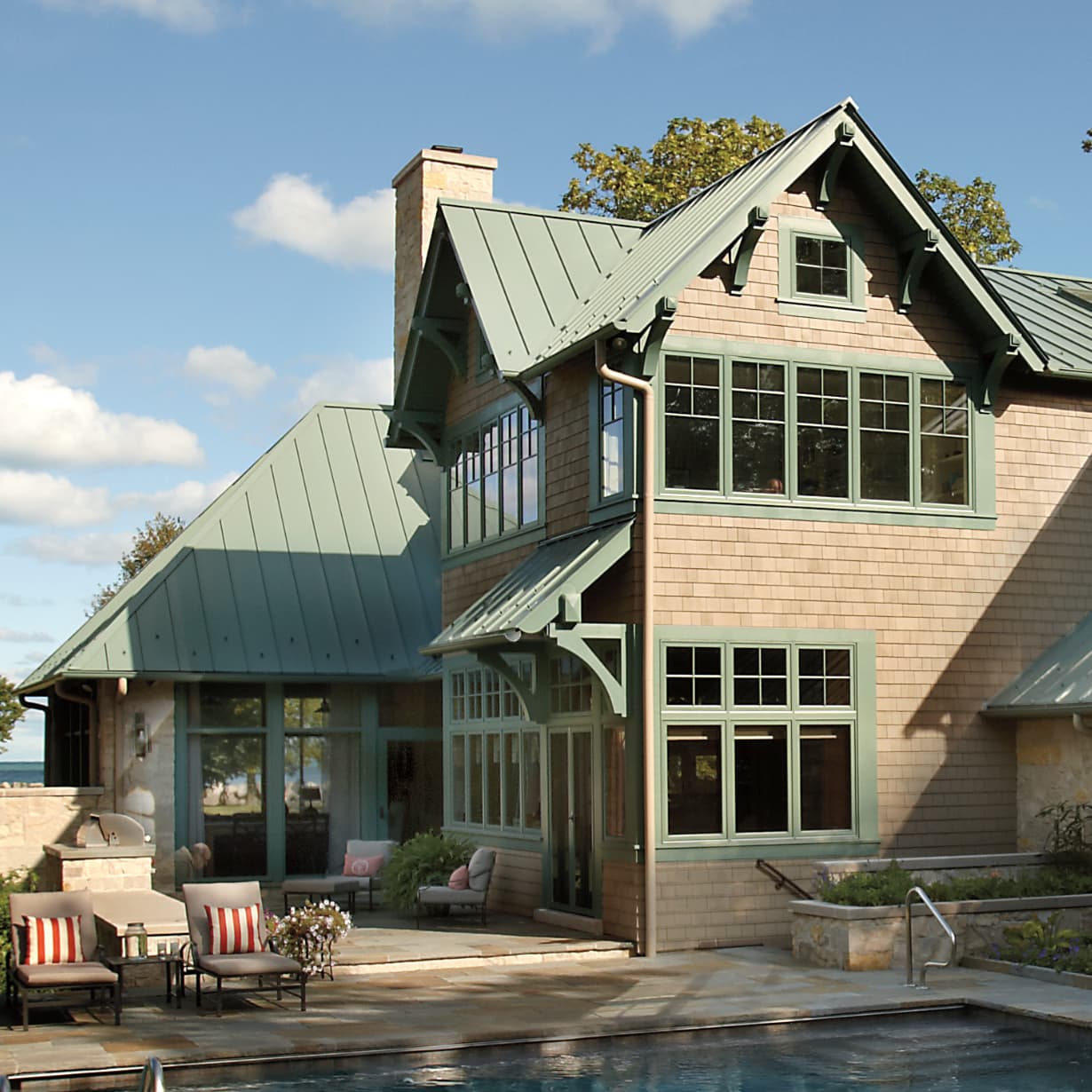Exploring the World of American Siding and Windows
Step into the realm of American siding and windows, where quality meets style and functionality. Discover the key elements that make up the backbone of every American home, as we delve into the diverse options and benefits that come with them.
American Siding and Windows
High-quality siding and windows are crucial components for American homes, providing not only aesthetic appeal but also functionality and energy efficiency.
Types of Siding Materials
There are several types of siding materials commonly used in the American market, each with its own unique characteristics and benefits:
- Vinyl Siding: Known for its affordability, low maintenance, and versatility in design options.
- Fiber Cement Siding: Durable, fire-resistant, and available in a wide range of colors and textures.
- Wood Siding: Offers a classic, natural look but requires more maintenance to prevent rot and insect damage.
- Engineered Wood Siding: Combines the aesthetics of wood with the durability of engineered materials.
- Aluminum Siding: Lightweight, resistant to rust and corrosion, and can be easily painted for customization.
Energy Efficiency Benefits
Installing new siding and windows can significantly improve the energy efficiency of a home, leading to reduced heating and cooling costs. Some of the key benefits include:
- Improved Insulation: Upgraded siding materials can provide better insulation, reducing heat loss in the winter and heat gain in the summer.
- Airtight Seals: New windows and siding help create airtight seals, preventing drafts and air leakage that can impact energy efficiency.
- Energy Savings: By reducing the workload on heating and cooling systems, energy-efficient siding and windows can lead to lower energy bills over time.
- Eco-Friendly: Energy-efficient materials contribute to a more sustainable home environment, reducing carbon emissions and overall energy consumption.
Siding Options
Vinyl, fiber cement, wood, and metal are popular options for siding materials, each with its own unique characteristics and benefits. Let's explore the differences between these options and the maintenance requirements for each.
Vinyl Siding
Vinyl siding is a cost-effective and low-maintenance option that comes in a variety of colors and finishes. Popular colors include classic white, coastal blue, and earthy tones like beige and gray. Vinyl siding requires periodic cleaning with a mild detergent and water to maintain its appearance.
Fiber Cement Siding
Fiber cement siding is known for its durability and resistance to rot and fire. It can mimic the look of wood or stucco and comes in a range of colors such as deep red, olive green, and dark brown. Fiber cement siding needs to be repainted every 5-10 years to keep it looking fresh.
Wood Siding
Wood siding offers a classic and natural look but requires more maintenance compared to other materials. Popular wood siding options include cedar, pine, and redwood, with finishes like natural stain, clear sealant, and solid paint colors. Wood siding needs regular staining or painting to protect it from moisture and pests.
Metal Siding
Metal siding, such as aluminum or steel, is a durable and weather-resistant choice
Window Styles

When it comes to choosing windows for your American home, there are various styles to consider. Each style not only contributes to the aesthetics of your home but also affects its functionality.
Double-Hung Windows
Double-hung windows are a classic choice for American homes. They feature two sashes that slide up and down, allowing for easy ventilation and cleaning. These windows are versatile and work well in various architectural styles.
Casement Windows
Casement windows are hinged on one side and open outward with a crank. They provide excellent ventilation and unobstructed views. These windows are popular in modern and contemporary homes.
Bay Windows
Bay windows protrude from the exterior wall of the house, creating a cozy nook inside. They add architectural interest and allow for plenty of natural light. Bay windows are perfect for reading corners or breakfast nooks.
When choosing windows for your home, it's essential to consider energy efficiency ratings. Look for windows with Low-E glass, multiple panes, and insulated frames to help reduce energy costs and maintain a comfortable indoor temperature.
Installation Process
Installing new siding and windows involves several important steps to ensure a proper and long-lasting installation. It is crucial to pay attention to details such as insulation and sealing to protect your home from elements and ensure energy efficiency.
Proper Insulation and Sealing
- Insulation is key to maintaining a comfortable indoor temperature and reducing energy costs. Make sure your walls are properly insulated before installing siding to prevent heat loss.
- Sealing is essential to prevent water infiltration, which can lead to mold growth and structural damage. Properly sealed windows and siding will protect your home from moisture and drafts.
- Consider using materials with good insulation properties, such as vinyl siding and double-pane windows, to improve energy efficiency and reduce heat transfer.
Finding Reputable Contractors
- Research and ask for recommendations from friends or family members who have recently had siding or windows installed.
- Check online reviews and ratings of contractors in your area to ensure they have a good reputation for quality work and customer satisfaction.
- Obtain quotes from multiple contractors and compare their pricing, services, and warranties before making a decision.
- Verify that the contractor is licensed, insured, and experienced in installing the type of siding or windows you desire.
Final Review
As we conclude our journey through the landscape of American siding and windows, remember that these crucial components not only enhance the aesthetics of a home but also contribute to energy efficiency and comfort. Embrace the possibilities they offer and make informed choices for your living space.